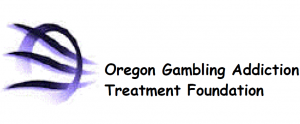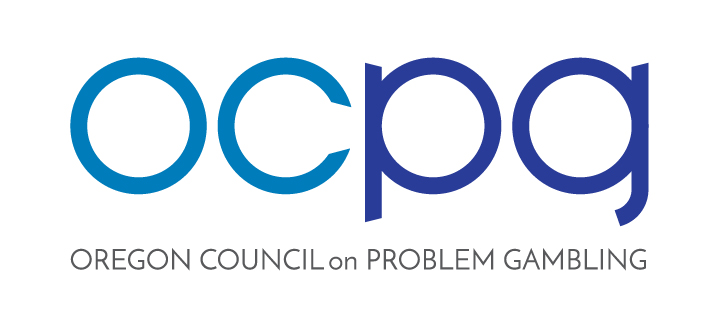The Oregon Gambling Addiction Treatment Foundation was established as a 501 (c) 3 Corporation in the State of Oregon on December 12, 1996. It petitioned, and became an Affiliate of the National Council on Problem Gambling in 1998 and in 2008 changed its name to the Oregon Council on Problem Gambling.
The founding membership included senior management representatives from two problem gambling treatment agencies, county government, Association of Community Mental Health Programs, Oregon Lottery, Spirit Mountain Casino, Portland Meadows and the Ecumenical Ministries of Oregon. The initial purpose of the Council was twofold: First to develop a research and education institution to support effective, efficient, and sustainable treatment and prevention of problem gambling in Oregon. The second overarching purpose was to provide a venue where all of the stakeholders could work together in a collegial manner in the best interest of Oregonians.
The Council acknowledges that there are significant economic benefits that come from state-sponsored gambling. Nonetheless, the Council is concerned at the high personal and social economic costs associated with disordered gambling.
Underlying the purpose of the Council were the goals to ensure empirical evidence was available to the public to create an impetus for statewide, evidence-based strategic planning to better ensure adequate allocation of resources for prevention, identification, referral, and treatment of disordered gamblers and their families; and, to help ensure the public’s understanding that problem gambling was a legitimate illness that responded well to treatment.
To that end, the Council sponsored six critical studies of problem gambling in Oregon. The first was a baseline study of the prevalence of problem and pathological gambling by adults in 1997.[1] This was followed in 1998[2] by one of the first adolescent studies in the U.S. estimating the prevalence of disordered gambling among Oregon youth and the final baseline study in 2001[3] estimated the prevalence of disordered gambling in older adult Oregonians.
Also in 2001,[4], [5] the first replication of the 1997 adult study was conducted to document any changes in the prevalence of disordered gambling and gambling behavior in the adult population since publication of that study. Again, in 2006[6] another replication adult prevalence study was commissioned. The timing of this study was driven by the fact that the State Lottery was adding line games to the existing video lottery terminals (VLTs) distributed throughout the state that were previously only offering video poker games.
Importantly, in 2002[7] the Council commissioned a pilot study, one of the first in the U.S., that investigated the potential causal implications relating to the onset of pathological gambling.
Findings from these studies indicated that the combined rate of pathological and problem gambling among adults in Oregon ranged from 3.3% in 1997 to 2.3% in 2001. The 2006 replication study found that rate had come back up to 2.7%, and the 2016 study showed a rate of 2.6%. Using current adult population estimates for Oregon[8] and the 2006 prevalence estimates[9] there are between 57,400 and 97,573 adults in Oregon who might benefit from a treatment intervention. It would be the Council’s desire that everyone who has problems associated with gambling receive appropriate assistance, but, in reality that is an unrealistic goal. Representatives from the Council, Dr. Thomas Moore, Paul Potter and Michael McCracken worked closely with Dr. Rachel Volberg[10] reviewed the available literature and determined that realistically, 3% of those with gambling problems should be expected to enter treatment each year – a range from 1,722 to 2,927 adults. During fiscal year 2005-2006 (FY 05-06) the number of adults accessing treatment reached 1700. The number of enrollments crested in FY 07-08 at 2012 and has since taken a precipitous dive dropping nearly 40% during the four following years.
In FY 03-04, the State was in the throes of another severe economic downturn and, as had happened at least three times since the State began funding problem gambling services in 1995, Lottery-based funding to support the Problem Gambling Services treatment and prevention efforts was in jeopardy. Historically, the Council and its Board Members have been instrumental in defending that funding though educating elected officials and other policy makers.
The Council acknowledges that there are significant economic benefits realized from state-sponsored gambling. Nonetheless, the Council is gravely concerned at the high personal costs as well as the social economic costs associated with problem gambling.

The Council was founded in 1996 as the Oregon Gambling Addiction Treatment Foundation.

The Council’s name changed to the Oregon Council on Problem Gambling in 2008.
[1] Volberg, R. (1997). Gambling and problem gambling in Oregon. Salem: OR Oregon Gambling Addiction Treatment Foundation
[2] Carlson, M. and Moore, T. (1998). Adolescent gambling in Oregon. Salem: OR Oregon Gambling Addiction Treatment Foundation
[3] Moore, T. (2001). Older adult gambling in Oregon. Salem: OR Oregon Gambling Addiction Treatment Foundation
[4] Volberg, R. (2001). Changes in gambling and problem gambling in Oregon: results from a replication study, 1997 to 2000. Salem: OR Oregon Gambling Addiction Treatment Foundation
[5] Moore, T. (2001). The prevalence of disordered gambling among adults in Oregon: a secondary analysis of data. Salem: OR Oregon Gambling Addiction Treatment Foundation
[6] Moore, T., (2006). The prevalence of disordered gambling among adults in Oregon: a replication study. Salem: OR Oregon Gambling Addiction Treatment Foundation
[7] Moore, T., Jadlos, T. (2002). The etiology of pathological gambling: a study to enhance understanding of causal pathways as a set towards improving prevention and treatment. Wilsonville: OR. Oregon Gambling Addiction Treatment Foundation
[8] Portland State University. (December 2010). Preliminary Oregon population estimates. Available: http://www.pdx.edu/prc/
[9] The margin of error from the 2006 study was ± 0.7%.
[10] This was initially accomplished through informal conversations at the conclusion of the 1997 prevalence study and again reviewed at the conclusion of the 2001 replication report. Those involved in these discussion were Mr. Mike McCracken, PGS manager; Mr. Paul Potter, OGATF Chair; Dr. Tom Moore PGS external evaluator; and, Dr. Rachel Volberg.
